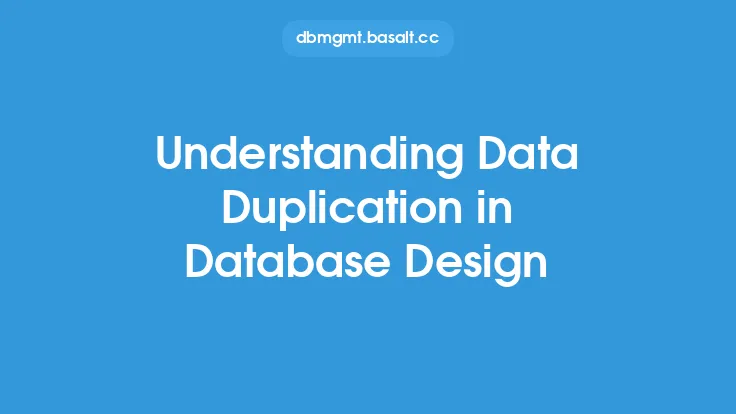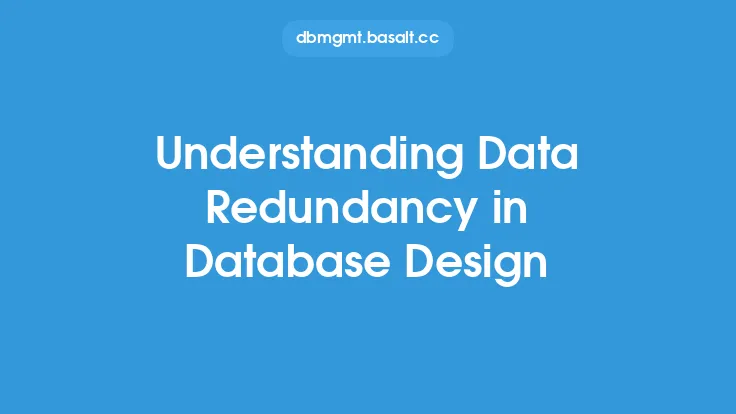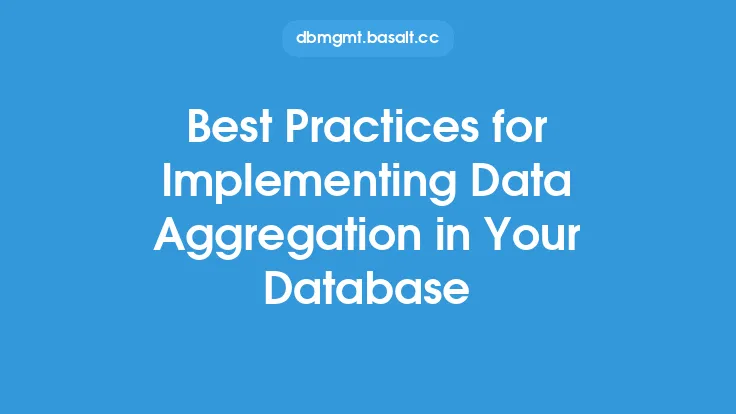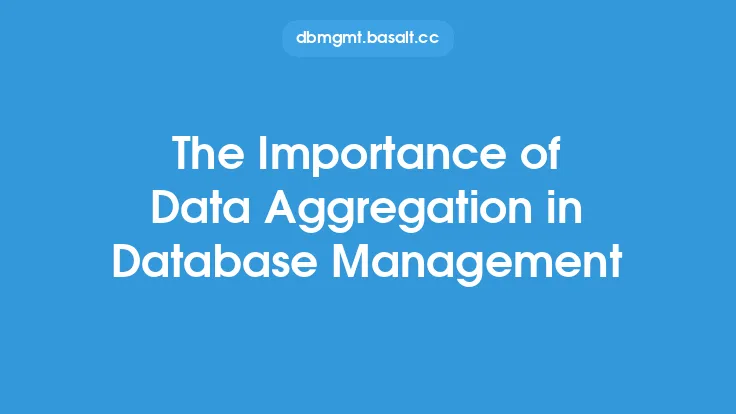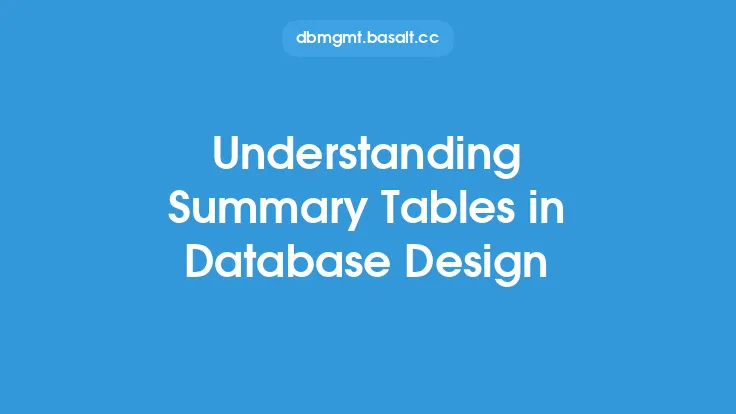Data aggregation is a fundamental concept in database design that involves the process of gathering and combining data from multiple sources into a single, unified view. This technique is used to improve data analysis, reduce data redundancy, and enhance query performance. In the context of data denormalization, data aggregation plays a crucial role in transforming complex data sets into more manageable and meaningful formats.
Introduction to Data Aggregation
Data aggregation is a broad term that encompasses various techniques and methods used to collect, process, and summarize data. The primary goal of data aggregation is to provide a more comprehensive and accurate understanding of the data, which can be used to support business decisions, identify trends, and optimize operations. In database design, data aggregation is used to create aggregated tables, views, or indexes that contain summarized data, which can be used to improve query performance and reduce the complexity of data analysis.
Types of Data Aggregation
There are several types of data aggregation techniques used in database design, including:
- Rollup aggregation: This technique involves aggregating data from multiple tables or sources into a single table or view. Rollup aggregation is commonly used to create summary tables or reports that provide an overview of the data.
- Drill-down aggregation: This technique involves aggregating data from a single table or source into multiple tables or views. Drill-down aggregation is commonly used to create detailed reports or analysis that provide a more granular understanding of the data.
- Grouping aggregation: This technique involves aggregating data based on specific groups or categories. Grouping aggregation is commonly used to create reports or analysis that provide insights into specific segments or populations.
- Cube aggregation: This technique involves aggregating data from multiple tables or sources into a multidimensional cube. Cube aggregation is commonly used to create complex reports or analysis that provide a comprehensive understanding of the data.
Data Aggregation Techniques
There are several data aggregation techniques used in database design, including:
- SQL aggregation functions: These functions, such as SUM, AVG, MAX, and MIN, are used to aggregate data in SQL queries.
- Data warehousing: This technique involves creating a centralized repository of data that can be used to support business intelligence and data analysis.
- ETL (Extract, Transform, Load) processes: These processes involve extracting data from multiple sources, transforming the data into a standardized format, and loading the data into a target system.
- Data aggregation tools: These tools, such as data aggregation software or libraries, provide a range of features and functions for aggregating and analyzing data.
Benefits of Data Aggregation
Data aggregation provides several benefits in database design, including:
- Improved query performance: Data aggregation can improve query performance by reducing the amount of data that needs to be processed and analyzed.
- Enhanced data analysis: Data aggregation can provide a more comprehensive and accurate understanding of the data, which can be used to support business decisions and identify trends.
- Reduced data redundancy: Data aggregation can reduce data redundancy by eliminating duplicate data and providing a single, unified view of the data.
- Simplified data management: Data aggregation can simplify data management by providing a centralized repository of data that can be easily accessed and analyzed.
Challenges of Data Aggregation
Data aggregation also presents several challenges in database design, including:
- Data quality issues: Data aggregation can be affected by data quality issues, such as missing or duplicate data, which can impact the accuracy and reliability of the aggregated data.
- Data complexity: Data aggregation can be complex, especially when dealing with large and complex data sets, which can require significant resources and expertise to manage and analyze.
- Scalability issues: Data aggregation can be affected by scalability issues, such as the ability to handle large volumes of data, which can impact the performance and reliability of the aggregated data.
- Security and privacy concerns: Data aggregation can raise security and privacy concerns, such as the protection of sensitive data, which can impact the trust and confidence in the aggregated data.
Best Practices for Data Aggregation
To ensure effective and efficient data aggregation, several best practices should be followed, including:
- Define clear goals and objectives: Clearly define the goals and objectives of the data aggregation project to ensure that the aggregated data meets the required needs and expectations.
- Use standardized data formats: Use standardized data formats to ensure that the data is consistent and compatible across different systems and applications.
- Implement data quality checks: Implement data quality checks to ensure that the data is accurate, complete, and reliable.
- Use appropriate data aggregation techniques: Use appropriate data aggregation techniques, such as rollup or drill-down aggregation, to ensure that the aggregated data is meaningful and useful.
- Monitor and maintain the aggregated data: Monitor and maintain the aggregated data to ensure that it remains accurate, up-to-date, and relevant.
